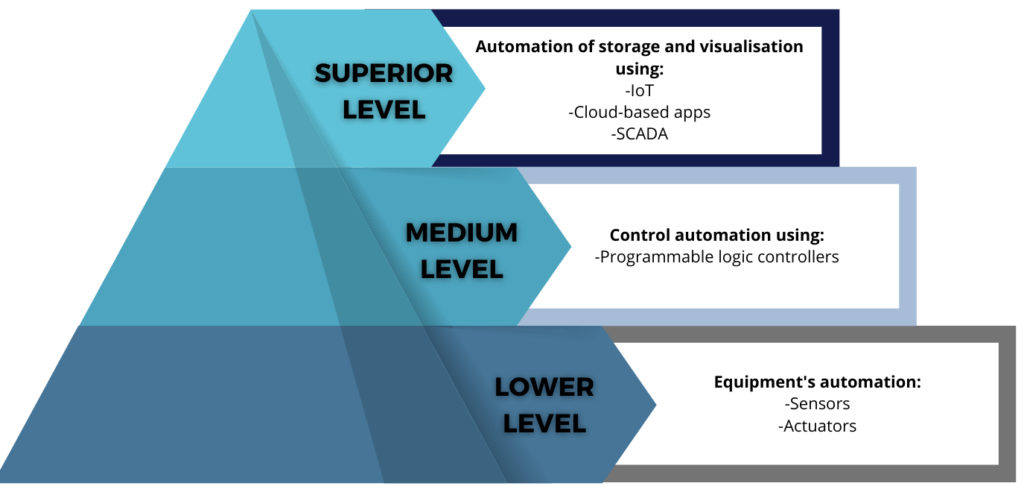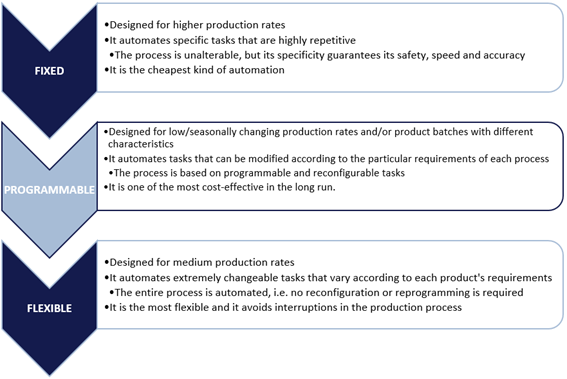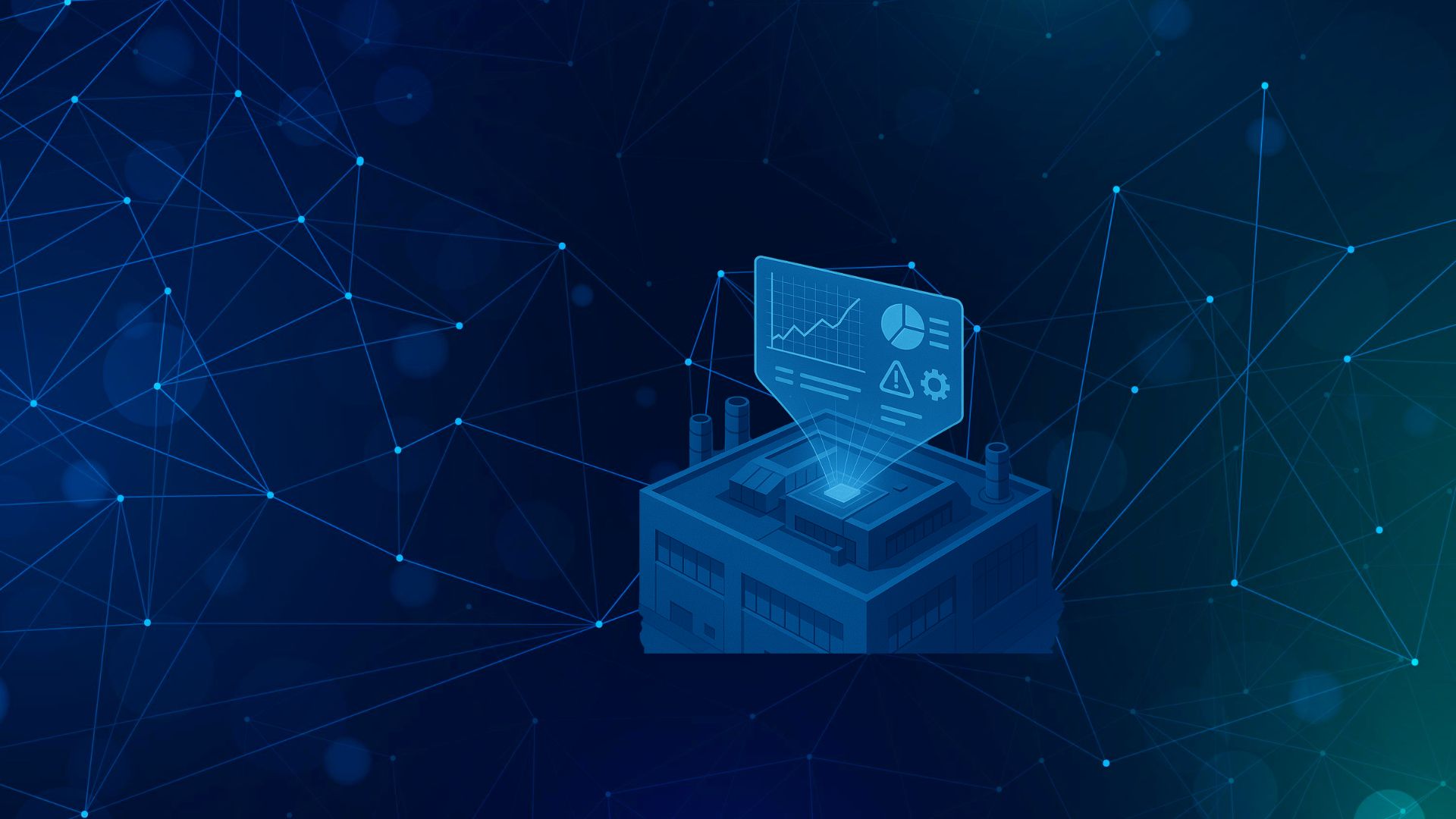Big Data in industry only becomes a competitive advantage when it is processed and acted upon in line with the insights generated.
Decisive action based on data is essential, and one of the most powerful strategies for transforming the sector is industrial automation.
What is industrial automation?
Industrial automation involves the monitoring, control and operation of electromechanical, electrohydraulic, electropneumatic and computerised systems to carry out tasks automatically, reducing human intervention and increasing precision.
It encompasses everything from industrial automation and control to the integration of IoT technologies, SCADA systems and collaborative robots, and is applied across every production sector, from automotive manufacturing to the food and beverage industry.
Levels of industrial automation
Tasks and processes can occur at any point within a company’s operations, which is why industrial automation functions across several hierarchical layers:
- Lower level: sensors and actuators capture data and perform physical actions.
- Middle level: programmable logic controllers (PLCs) supervise and coordinate operations.
- Upper level: SCADA systems, IoT platforms and cloud-based solutions integrate data for analysis and decision-making.

Every business has its own specific characteristics, so automation solutions must be custom designed and implemented with close attention to these particular requirements.
Types of industrial automation
Not all industrial organisations deploy the same automation systems. Depending on their scope and flexibility, these systems fall into three categories:
- Fixed or hard automation: suited to very high-volume production and highly repetitive tasks. The process is unalterable but offers high reliability, speed and accuracy. It is the most cost-effective option when both product and process remain constant.
- Programmable automation: ideal for variable production, such as seasonal or batch manufacturing. The system can be reprogrammed according to product specifications, delivering long-term profitability.
- Flexible automation: designed for medium-volume production with frequent changes. The entire process is automated without manual reprogramming, adapting instantly to new conditions.

Key challenges of implementing industrial automation
Organisations face several hurdles when moving towards automation, and overlooking them significantly increases the risk of failure or underperformance:
- High initial investment: both in infrastructure and skilled personnel; payback occurs in the medium to long term, and ROI should be evaluated beyond purely financial metrics.
- Deep cultural shift: engagement is required across all levels, from management to shop-floor operators, with automation perceived as an opportunity rather than a threat.
- Socio-labour challenges: active training, reskilling and workforce involvement are vital to counter perceptions of job loss.
- Cybersecurity: in connected environments, securing both OT and IT networks against cyber threats must be an integral part of the initial planning.
- Technological scalability: systems must be modular, enabling the seamless integration of new lines, devices or technologies without complete redesign.
Industrial automation software
Key technological tools driving automation and control include:
- Collaborative robots (cobots): operate alongside people in repetitive or hazardous tasks, supporting human teams. They offer high flexibility through straightforward programming, with advanced models capable of instant reconfiguration and self-diagnostics.
- Distributed control systems (DCS): decentralise monitoring for greater flexibility, allowing deployment across facilities according to operational needs.
- Programmable logic controllers (PLCs): real-time programmable systems supervising and controlling production equipment.
- Artificial neural networks: process large data volumes, identify patterns and respond quickly to production demands, primarily for big data processing and pattern recognition.
- HMI and SCADA interfaces: bridge human–machine communication, enabling data collection, process visualisation and control.
- Sensors, 5G networks, IoT and cloud computing: enable real-time connectivity and monitoring.
- Industrial refrigeration optimisation software: specialised platforms, such as Cooling Management Systems, integrate IoT, advanced analytics and predictive algorithms to adjust energy consumption, prevent failures and maintain optimal temperatures in industrial and food-processing environments. These solutions form part of the Industry 4.0 automation ecosystem, delivering energy savings and enhanced operational control.
Automation implementation strategy
Successful implementation demands strategic planning and a long-term vision:
- Process analysis: identify improvement opportunities using real-time data.
- Technology selection: choose hardware and software aligned with the required automation type.
- Progressive integration: minimise disruptions and ease workforce adaptation.
- Training and change management: reduce internal resistance and boost acceptance.
- Industrial cybersecurity: protect connected networks and devices from external threats.
An effective automation strategy should integrate:
- Predictive maintenance: advanced techniques such as vibration analysis, ultrasound and thermography to prevent failures.
- Energy efficiency: smart systems to cut consumption and emissions.
- Sustainability: resource optimisation to reduce environmental impact.
Benefits of industrial automation
With careful planning, a consensual approach and the right technological tools, industrial executives can fully realise the benefits of automation:
- Higher quality and productivity: eliminates human error, speeds up processes and reallocates labour to higher-value tasks such as quality control.
- Improved operational efficiency: precise allocation of resources and reduced waste, with optimised logistics and inventory management.
- Flexibility: rapid response to shifts in demand, whether seasonal or market-driven.
- Workplace safety: protects employees from physical hazards, using technology to warn of imminent risks or replace humans in dangerous tasks.
- Full plant visibility: real-time data for objective decision-making and deep insight into production performance.
Innovation in practise: the Gradhoc case
Gradhoc exemplifies advanced integration, operating as a Cooling Management System that combines IoT, AI, digital twins and cloud analytics to optimise industrial and commercial refrigeration. It delivers:
- Automatic predictive maintenance before failure occurs.
- Adaptive energy optimisation, adjusting temperature and consumption according to tariffs and processes.
- Reduced maintenance costs (up to 25%) and energy use (20–45%), lowering the carbon footprint.
Conclusion
Industry 4.0 automation is not simply about installing machines or software. It is about transforming production through a holistic approach that blends technology, data and people. From food processing to advanced manufacturing, when applied effectively, industrial automation enhances competitiveness, lowers costs and equips businesses to meet future challenges.



